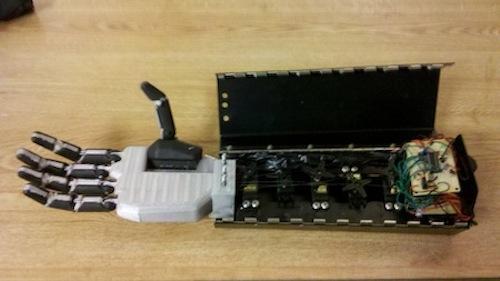Medical Devices With Force Sensors Show Enhanced Effectiveness
February 3, 2014

Design engineers aim to create medical devices that are beneficial to both doctor and patient. Medical devices that integrate thin, flexible, force-sensing technology offer a range of advantages that enhance the quality of a device and the treatment it provides. Due to these advantages, force feedback has become a valuable feature in the medical device market. The ability of a device to provide proper feedback to its user helps to eliminate guesswork. It instead creates consistency and improves patient outcome. The integration of force sensors into medical devices results in quantifiable and actionable data that enhance the quality of treatment a patient receives.
The functionality and ease of use of a medical device are top priority for design engineers.

When choosing a technology to obtain force measurement, engineers take into consideration the size, accuracy, and cost of materials. Size is a crucial aspect of the design process, due to the growing trend of smaller and less invasive medical devices. The thin and flexible nature of piezoresistive, tactile force sensors makes this technology the ideal force-sensing solution for designing medical devices. These force sensors are not only easy to integrate due to their small sizes compared to load cells and strain gauges, but they also use simple electronics. The lightweight, easy-to-integrate features, allow biomedical design engineers to produce highly accurate, non-invasive devices, suitable for medical environments.
Force sensors are designed in various medical devices. These devices are used for diagnostic, therapeutic, and surgical purposes. The sensors allow a valuable communication between the user and the device, resulting in a more efficient treatment. For example, force sensors are designed into surgical grippers in order to relay force measurement messages back to the surgeon. Small devices, such as grippers, allow the surgeon access to parts of the body not easily accessible by larger tools.These smaller, lightweight devices also make the surgery minimally invasive, which is a desirable feature in the surgical field. The grippers are used to hold very sensitive, easy-to-tear parts of the body, such as soft tissues and veins. The force sensors integrated into the gripper allow the surgeon to monitor closely the applied pressures to the operative area, and to adjust force properly throughout an operation. This communication helps to ensure a successful surgery and a faster recovery process for the patient.
When diagnosing and treating patients, consistency is a central goal among medical practitioners. Specifically, with regard to manual evaluations in the field of physical therapy, the amount of force applied by practitioners can vary greatly and reach potentially dangerous levels. Therefore, consistency among therapists in order to obtain adequate feedback without harming the patients is crucial. This hands-on treatment involves skilled hand movements, taking into account both location and speed, applied by the therapist to improve the mobility and function of the targeted muscles and tissues.
About the Author(s)
You May Also Like





